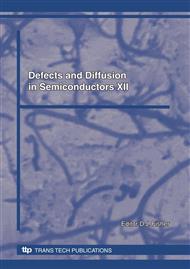p.31
p.39
p.55
p.63
p.85
p.99
p.107
p.113
p.117
Effect of Microstructure upon the Wear Properties of 2.25Cr-1Mo Steel
Abstract:
The present paper investigates the effect of microstructural variations upon the wear properties of 2.25Cr-1Mo steel using a dry sliding wear test. Optical, Scanning and Transmission Electron Microscopy (TEM) together with Energy Dispersive X-ray analysis (EDX) have been used to characterize the microstructures and identify the evolution of various precipitates in terms of their shapes, sizes and morphologies. The wear behavior of this steel was investigated using a disc-on-roller multiple wear tester under dry sliding conditions, rubbing against EN-31 steel. Samples were tested at 100N load and 500rpm sliding speed at room temperature. A decrease in wear loss was measured continuously for up to one hour for all the samples. The results indicated that the wear behavior of this steel was highly influenced by microstructural variations taking place during service exposure. The precipitation of globular Cr- and Mo-rich carbides has been found to improve the wear behavior of this steel at room temperature. Scanning Electron Micrographs (SEM) of worn surfaces have been used to correlate the results obtained
Info:
Periodical:
Pages:
85-97
Citation:
Online since:
July 2010
Authors:
Price:
Сopyright:
© 2010 Trans Tech Publications Ltd. All Rights Reserved
Share:
Citation:


